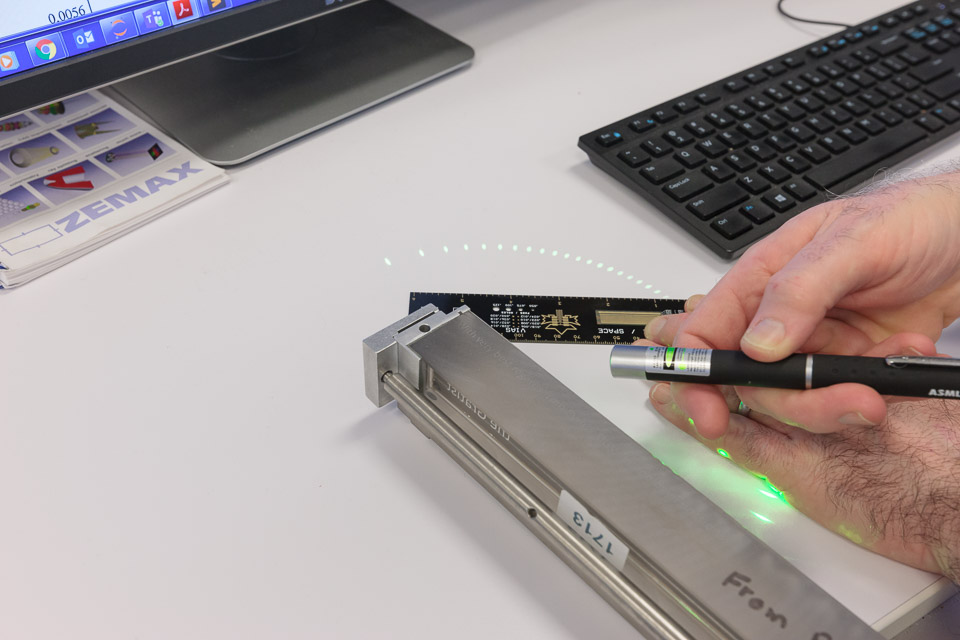Many In-Vitro diagnostic Devices (IVDs) employ optical techniques to sense. For example, labelled antibodies fluoresce when stimulated and reagents are available which, when applied to particular body fluids, change colour depending on some physiological effect. Although research tools for detecting these effects, such as ELISA, are common in the Lab, an ELISA reader is an expensive, delicate piece of equipment, and the whole assay process is unsuitable for low cost, Point of Care IVD use.
This blog discusses an approach to developing low cost IVDs suitable for Point of Care use – optical sensing.
Actual new product development of a low cost IVD works best when the proof of concept employs a spectrometer to measure absorption, reflection or change in colour of a chromophore, or fluorescence of a fluorophore. To productise the proof of concept into a disposable IVD, we need to use a low cost sensing technology, and the lowest cost of these is LEDs and photo-diodes.
During the Phase 0 Technology Development stage of work, we lower technology risk by understanding the absorption curve that provides maximum contrast for an appropriate number of selected wavelengths, and then tweak these for wavelengths of LEDs we can actually obtain. That covers illumination, but to actually sense, we then need to develop a detector and signal conditioning chain that matches the wavelengths of the chromophore or flourophore we intend to use, with sufficient sensitivity and dynamic range.
For example, common silicon photodiodes are more sensitive at long wavelengths, but biomarker labels often require UV excitation, but we must monitor the UV excitation intensity to compare with any fluorescence intensity. In these cases, we can use exotic (i.e. expensive) photodiodes like SiC or GaP, but a lower cost solution may employ a UV filter in front of a photodiode, and a brighter light source to offset the attenuation caused by the filter, such as Laser diodes or VCSEL, but trying to avoid any coherence requirements.
Alternatively, avalanche photo-diodes provide increased sensitivity, but are more difficult to drive and can be noisy. Another example is where a system requires a large dynamic range due to very dilute concentrations mean 99.99% of the supplied light hits the photo-detector without interacting with any chromophores, but we are only interested in the 0.01%. An alternate common technique is to modulate the source and employ a lock in amplifier. This can, unfortunately, take several proof of concept spins to hit on the right combination of sensitivity, dynamic range and resistance to noise.
This risk reduction process works well when all aspects of the system are well understood. However, sometimes a client approaches StarFish with an product which may already have jumped to LEDs and PiN diode sensing, and they are happy with the performance, but want to modernize or cost optimize the system. In these cases, it can be very difficult to understand the limitations of the system – if an LED from a particular manufacturer has already been selected, what is the impact of using an alternative LED which may have a different spectral width? What happens if we use an alternative photo-diode which may have different area, photo-sensitivity, surface coatings or even modified absorption characteristics due to the optical absorption of the epoxy packaging?
In these cases, I recommend that the optical characteristics of the system are decomposed and properly understood as an initial, investigative piece of work. It may only be at this stage that we discover other issues, which is ultimately good for the client as we have prevented a product with a known failure mode from reaching the market, but this can of course be unpleasant to swallow.
For example, certain LEDs may have a small secondary emission (such as 660nm Red LEDs with a secondary emission at 850nm), which goes unnoticed during the initial selection process performed by the client. The photo-diode is oblivious to the incident wavelength, and hence creates a larger electrical signal than expected as the chromophore only absorbs the red light, skewing the results.
This is particularly troublesome for projects where there is no forward optical model; i.e. it is not possible to predict the effect of changes in illumination wavelength as the system is empirically calibrated, and the extra offset has become part of the system calibration. Here changing to an LED with apparently identical spec characteristics on the data sheet would be disastrous.
The bottom line in developing low cost optical sensing techniques is to go beyond just finding pieces that work together, and truly understand why and how they work together so you have a true working solution and not just a proof of concept.
Vincent Crabtree, PhD is a Regulatory Advisor & Project Manager at StarFish Medical. He welcomes comments and suggestions on other low cost optical sensing techniques for Medical Devices from readers.
Image: Courtesy of D-Kuru from Wikimedia Commons
